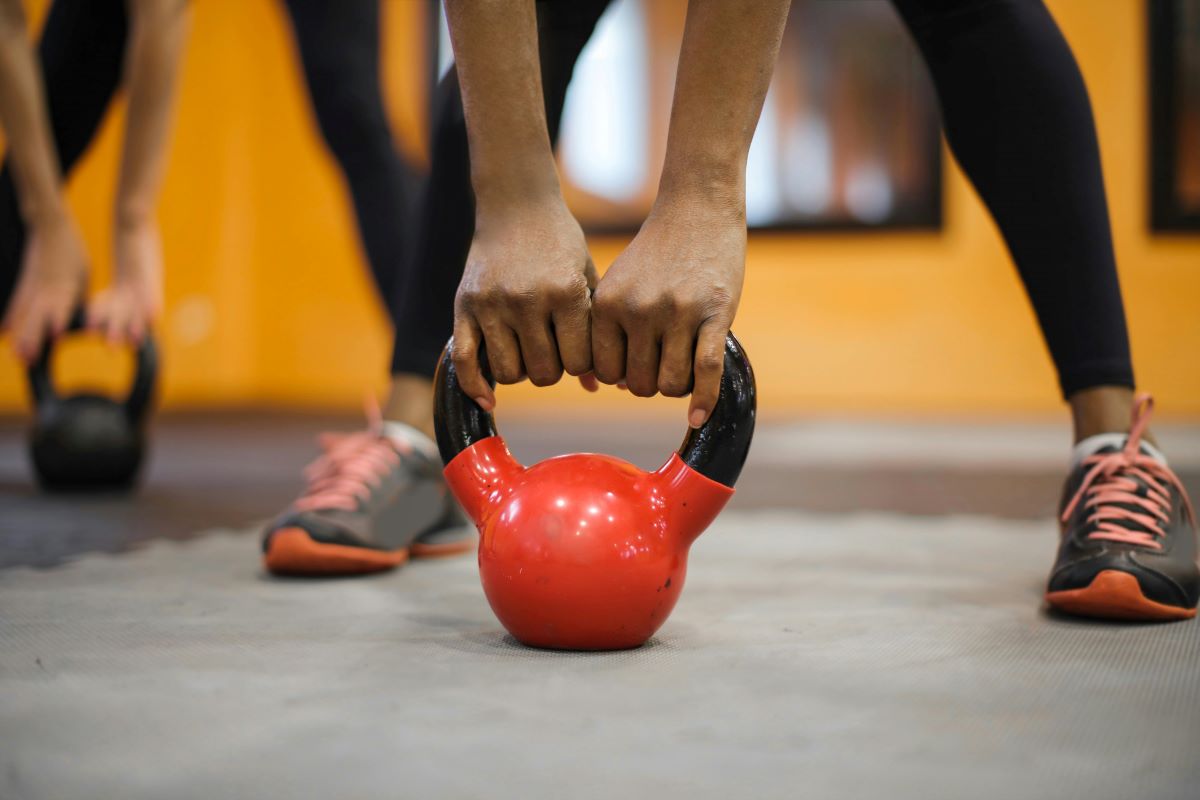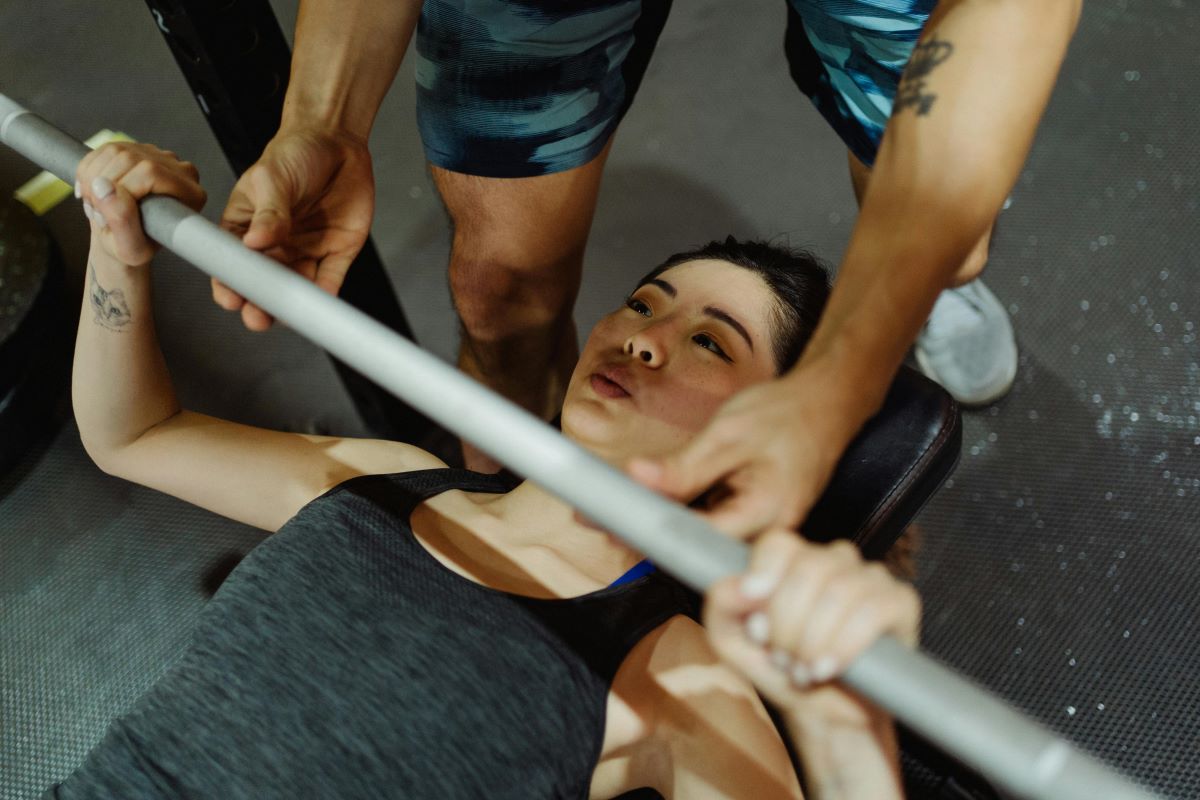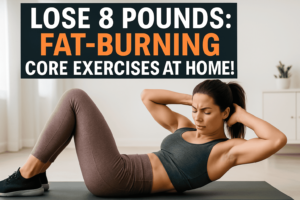When it comes to achieving our fitness goals, a well-rounded workout routine is essential. And if you’re looking to supercharge your fitness journey, intense gym workouts can be just the ticket. These workouts not only push your body to its limits but also deliver transformative effects that can take your fitness to new heights. In this article, we’ll explore 8 intense gym workouts that can help you reach your fitness goals faster than ever.
I. Why Choose Intense Workouts?
Intense workouts offer a multitude of benefits that can significantly impact your fitness journey. First and foremost, these workouts push your body to work at its maximum capacity, resulting in improved strength, endurance, and overall fitness. Intense exercises also stimulate the release of endorphins, which can boost your mood and leave you feeling energized and invigorated. Additionally, intense workouts are highly efficient, allowing you to achieve impressive results in less time compared to traditional exercise routines. Despite common misconceptions, intense workouts are not reserved for elite athletes or fitness enthusiasts. With the right approach and proper planning, anyone can benefit from these workouts and take their fitness to the next level.

II. Preparing for Intense Gym Workouts
Before diving into intense gym workouts, it’s crucial to set realistic goals and expectations. Understand that progress takes time, and it’s essential to focus on gradual improvements rather than immediate results. Consulting with a fitness professional can provide valuable insights and guidance tailored to your specific needs and abilities. They can help you create a personalized workout plan that addresses your goals and takes into account any potential limitations or concerns. By planning ahead and setting yourself up for success, you’ll be ready to embark on your intense gym workout journey with confidence.
III. High-Intensity Interval Training (HIIT) Workouts
High-Intensity Interval Training, or HIIT, is a popular form of intense workout that involves short bursts of high-intensity exercises followed by brief recovery periods. These workouts are known for their efficiency and effectiveness in burning calories, improving cardiovascular fitness, and increasing overall endurance.
1. HIIT Workout Examples
- Tabata Training:
Tabata is an intense 4-minute workout that involves 20 seconds of all-out effort followed by 10 seconds of rest, repeated for a total of eight rounds. This workout can be customized to target various muscle groups and can be done with exercises such as squats, burpees, or mountain climbers.
- Circuit Training:
Circuit training involves performing a series of exercises back-to-back with little to no rest in between. This versatile workout can incorporate both cardio and strength exercises, making it an excellent choice for a full-body intense workout.
- The 7-Minute Workout:
Ideal for busy individuals, the 7-minute workout is a high-intensity routine that targets multiple muscle groups. It consists of 12 exercises performed for 30 seconds each, with a 10-second rest in between. - (Related: 7-Minute Tabata Workout: Energizing Sweat Session for All Fitness Levels)
2. Equipment-Based HIIT Workouts
- Jump Rope Intervals:
Jump rope intervals are an excellent way to elevate your heart rate and burn calories. This equipment-based HIIT workout involves jumping rope at a fast pace for a set amount of time, followed by a short rest period. It’s a great cardio exercise that also engages your core, legs, and arms.
- Kettlebell Circuits:
Kettlebell circuits combine strength training with cardiovascular exercise. By performing a variety of kettlebell exercises in quick succession, you can challenge multiple muscle groups while improving your strength and endurance.

Related: Optimize Your Workout: 15 Effective Kettlebell Exercises for Muscle Building
- Indoor Cycling Workouts:
Indoor cycling workouts, often done on a stationary bike or spin bike, offer a high-intensity cardio workout that targets your lower body. These workouts simulate outdoor cycling and can be customized to suit your fitness level.
IV. Strength Training for Rapid Muscle Growth
Strength training is a vital component of any fitness journey, whether your goal is to build muscle, improve athletic performance, or enhance overall strength. Incorporating intense strength training workouts can help you achieve rapid muscle growth and reach your desired physique
A. Compound Lifting Exercises
Compound lifting exercises are multi-joint movements that engage multiple muscle groups simultaneously. These exercises are highly effective at building overall strength and muscle mass.
- Squats:
Considered the king of lower body exercises, squats target your quadriceps, hamstrings, and glutes. This intense exercise not only strengthens your lower body but also engages your core and improves overall stability.

- Deadlifts:
Deadlifts are a powerful exercise that primarily targets your posterior chain, including your glutes, hamstrings, and lower back. By performing deadlifts, you can develop a strong and resilient physique.

- Bench Press:
The bench press is an upper body exercise that primarily targets your chest, shoulders, and triceps. It’s an excellent compound exercise for building upper body strength and definition.

B. Isolation Exercises for Targeted Muscle Development
Isolation exercises focus on specific muscle groups and are great for targeting weak areas, improving muscle imbalances, and achieving a more balanced physique.
- Bicep Curls:
Bicep curls are a popular isolation exercise that targets the biceps, helping to sculpt and define your arm muscles.
How to Do Bicep Curls:
Starting Position: Stand with your feet shoulder-width apart, gripping a dumbbell in each hand. Ensure your back is straight, shoulders relaxed, and arms fully extended down by your sides, with palms facing forward.
Lift the Weights: Without moving your upper arms, exhale and curl the weights toward your shoulders. Concentrate on contracting your bicep muscles during the entire movement. Your forearms should be the primary movers.
Top Position: When the dumbbells reach shoulder level, briefly squeeze your biceps to maximize the contraction.
Lower the Weights: Inhale and slowly lower the dumbbells back to the starting position, maintaining control. Avoid swinging the weights or relying on momentum.
Repetition: Perform the desired number of repetitions with a focus on controlled and deliberate movements. Begin with a weight that allows proper form, and gradually increase resistance as your strength improves.
Include Bicep Curls in your workout routine to not only develop your biceps but also to enhance the overall aesthetic of your arms, promoting a sculpted and defined look.
- Lateral Raises:
Lateral raises primarily target the shoulder muscles, including the deltoids. By incorporating lateral raises into your workout routine, you can strengthen your shoulder muscles, resulting in a broader appearance.
How to Do Lateral Raises:
Starting Position: Stand with your feet shoulder-width apart, holding a dumbbell in each hand. Keep your back straight, shoulders relaxed, and arms hanging by your sides, with palms facing your body.
Lift the Weights: While maintaining a slight bend in your elbows, exhale and lift the dumbbells outward to the sides until your arms are parallel to the ground. Focus on using your shoulder muscles to lift the weights, keeping the movement controlled.
Top Position: Hold the weights at the top for a brief moment, ensuring your arms are parallel to the ground. Feel the contraction in your deltoids.
Lower the Weights: Inhale and slowly lower the dumbbells back to the starting position in a controlled manner. Avoid swinging the weights or using momentum.
Repetition: Perform the desired number of repetitions, concentrating on the quality of the movement rather than the amount of weight lifted. Start with a lighter weight to master the form before progressing to heavier weights.
Lateral Raises are an excellent addition to your shoulder workout routine, enhancing the definition and width of your shoulder muscles for a well-rounded physique.
- Glute Bridges:
Glute bridges are a fantastic exercise for developing strong and well-shaped glute muscles. This exercise engages your glutes, hamstrings, and core, contributing to a firm and lifted rear.

How to Do Glute Bridges:
Starting Position: Lie on your back with your knees bent and feet flat on the ground, hip-width apart. Place your arms by your sides with palms facing down.
Lift Your Hips: Exhale and press through your heels, lifting your hips towards the ceiling. Squeeze your glutes at the top of the movement to maximize contraction.
Form a Straight Line: Ensure your body forms a straight line from your shoulders to your knees at the top of the bridge. Avoid arching your back excessively.
Hold the Top Position: Pause briefly at the top of the movement, emphasizing the engagement of your glutes and core muscles.
Lower Your Hips: Inhale and gently lower your hips back to the starting position with control, avoiding touching the ground between repetitions.
Repetition: Perform the desired number of repetitions, focusing on the mind-muscle connection and maintaining proper form.
Including Glute Bridges in your workout routine is an excellent way to target and strengthen the glutes, hamstrings, and core, ultimately contributing to a more sculpted and lifted posterior.
V. Plyometric Training for Explosive Power
Plyometric training involves exercises that generate quick, powerful movements. These explosive exercises enhance athletic performance, improve power output, and increase overall strength.
A. Plyometric Exercises for Lower Body
- Box Jumps:
Box jumps are a great plyometric exercise for enhancing leg power and explosive strength. By jumping onto a box or platform from a standing position, you engage your leg muscles and develop explosive lower body strength.

How to Do Box Jumps:
Starting Position: Stand in front of a sturdy box or platform with your feet shoulder-width apart. Ensure the box is at an appropriate height for your fitness level.
Preparation: Bend your knees slightly, lowering your body into a partial squat position. Keep your back straight, chest up, and arms in a ready position.
Jump Onto the Box: Explosively push through your feet, swinging your arms forward, and jump onto the box with both feet. Aim to land softly on the box, ensuring your entire foot is on the surface.
Stand Tall: Straighten your hips and knees as you stand tall on top of the box, fully extending your body.
Step Back Down: Carefully step back down from the box, one foot at a time, maintaining control. You can either step down or jump down, depending on your preference and fitness level.
Repetition: Perform the desired number of repetitions, focusing on maintaining good form and executing each jump with power and control.
Box Jumps are a valuable addition to your workout routine, promoting not only leg power and explosive strength but also improving coordination and agility. Adjust the box height based on your fitness level and gradually increase it as you progress.
- Lateral Bounds:
Lateral bounds are effective for improving agility and lateral movement capabilities. This exercise involves jumping laterally from side to side, challenging your lower body muscles and enhancing your overall athleticism.
How to Do Lateral Bounds:
Starting Position: Stand with your feet together, maintaining a slight bend in your knees. Position your hands at your chest or on your hips for balance.
Preparation: Engage your core muscles and slightly bend your knees to prepare for the lateral jump.
Jump Sideways: Explosively push off with one foot, propelling your body laterally to the side. Simultaneously, swing your arms to the side to assist in the movement.
Land Softly: Upon landing, bend your knees to absorb the impact, ensuring a soft and controlled landing. Focus on landing on the balls of your feet with your knees slightly bent.
Transfer Weight: Shift your weight to the side you jumped towards, preparing for the next bound.
Repeat to the Other Side: Immediately push off with the other foot, jumping back in the opposite direction. Continue alternating sides.
Repetition: Perform the desired number of lateral bounds, maintaining a fluid and controlled motion throughout.
Lateral Bounds are an excellent addition to your workout routine, fostering improved agility, lateral quickness, and lower body strength. Incorporate this exercise to enhance your overall athletic performance.
- Split Squat Jumps:
Split squat jumps are a variation of the traditional split squat that incorporates an explosive jump. This exercise targets your lower body muscles, particularly your quads, hamstrings, and glutes.

How to Perform Split Squat Jumps:
Starting Position: Begin in a split stance with one foot forward and the other extended behind you. Ensure your feet are hip-width apart.
Lower into a Split Squat: Descend into a split squat by bending both knees, maintaining a 90-degree angle with each leg. Keep your torso upright, and ensure your front knee is directly above your ankle.
Prep for Jump: From the split squat position, prepare for the explosive phase by engaging your core and loading the muscles in your lower body.
Explosive Jump: Propel yourself upward through the front foot, pushing off the ground with force. As you ascend, swing your arms to assist in the upward movement.
Switch Leg Position Mid-Air: While in mid-air, swiftly switch the position of your legs, bringing the back foot forward and the front foot backward.
Soft Landing: Land softly with both knees bent, transitioning into the new split squat position. Aim for a controlled and cushioned landing to minimize impact.
Continuous Movement: Immediately flow into the next explosive jump, alternating the position of your legs mid-air with each repetition.
Repetition: Perform the desired number of repetitions, maintaining a fluid and controlled motion throughout.
Incorporate Split Squat Jumps into your workout routine to unleash the power of your lower body, fostering strength, agility, and explosive muscle development.
B. Upper Body Plyometric Exercises
- Clap Push-Ups:
Clap push-ups are an advanced version of the traditional push-up that incorporates explosive power into the movement. By pushing off the ground with enough force to clap your hands together, you engage your chest, shoulders, and triceps while improving upper body power and explosiveness.
How to Execute Clap Push-Ups:
Starting Position: Begin in a traditional push-up position with your hands slightly wider than shoulder-width apart. Ensure your body forms a straight line from head to heels.
Lower Your Body: Lower your chest towards the ground by bending your elbows, keeping them close to your sides. Aim for a full range of motion, bringing your chest as close to the floor as possible.
Explosive Push-Off: As you push up from the lowered position, explode with enough force to lift your hands off the ground. Simultaneously, bring your feet off the ground to create space for the clap.
Clap in Mid-Air: In mid-air, quickly clap your hands together before returning them to the starting position.
Soft Landing: As your hands and feet return to the ground, land softly to absorb the impact. Bend your elbows slightly to cushion the landing.
Reposition for Next Rep: Reset your hands and feet to the starting position, preparing for the next repetition.
Repetition: Perform the desired number of repetitions, focusing on explosive power, control, and a quick hand clap in each repetition.
Clap Push-Ups provide an intense upper body workout, challenging not only strength but also explosiveness. Incorporate them into your routine to enhance your push-up game and overall upper body athleticism.
- Medicine Ball Slams:
Medicine ball slams involve explosively throwing a medicine ball onto the ground. This exercise targets your core muscles, contributes to overall strength development, and improves coordination.
How to Perform Medicine Ball Slams:
Select the Right Medicine Ball: Choose a medicine ball with an appropriate weight, considering your fitness level. Hold the medicine ball with both hands in front of your body.
Stance and Posture: Stand with your feet shoulder-width apart, ensuring a stable and balanced stance. Hold the medicine ball at chest height with your elbows slightly bent.
Engage Your Core: Tighten your core muscles to create a strong and stable midsection.
Raise the Medicine Ball: Lift the medicine ball overhead, fully extending your arms.
Explosive Slam: With forceful energy, slam the medicine ball onto the ground directly in front of you. Use your entire body to generate power, involving your core, back, and leg muscles.
Catch and Reset: As the medicine ball rebounds, quickly catch it with both hands. Maintain control of the ball as it returns to your hands.
Reposition for Next Slam: Reset your stance and lift the medicine ball overhead to prepare for the next repetition.
Repetition: Perform the desired number of repetitions, focusing on powerful and controlled movements with each slam.
Medicine Ball Slams are a dynamic and effective exercise to incorporate into your workout routine, targeting core strength, promoting full-body engagement, and adding an element of intensity to your training.
- Plyo Push-Ups:
Plyo push-ups combine the benefits of a traditional push-up with explosive power. By pushing off the ground forcefully enough to lift your hands off momentarily, you engage your upper body muscles and boost strength and endurance.
How to Execute Plyo Push-Ups:
Starting Position: Begin in a plank position with your hands placed slightly wider than shoulder-width apart. Ensure your body forms a straight line from head to heels.
Lower Your Body: Lower your chest towards the ground by bending your elbows, keeping them close to your sides. Aim for a full range of motion, bringing your chest as close to the floor as possible.
Explosive Push-Off: From the lowered position, explosively push off the ground with enough force to lift your hands off the floor. Aim to create air between your hands and the ground.
In Mid-Air: While in mid-air, quickly clap your hands together, emphasizing the explosive nature of the movement.
Soft Landing: As your hands return to the ground, land softly to absorb the impact. Bend your elbows slightly to cushion the landing.
Reset for Next Rep: Reset your hands to the starting position, preparing for the next repetition.
Repetition: Perform the desired number of repetitions, focusing on explosive power, a quick hand clap, and maintaining control during each repetition.
Plyo Push-Ups add an intense plyometric element to your upper body workout, targeting chest, shoulders, triceps, and engaging core muscles. Include them in your routine for an advanced challenge and enhanced upper body explosiveness.
V. Endurance Workouts for Stamina and Cardiovascular Health
Endurance training plays a crucial role in improving overall fitness, stamina, and cardiovascular health. By incorporating different forms of endurance exercises into your workout routine, you can boost your stamina, enhance your cardiovascular fitness, and increase your overall endurance.
Cardiovascular Endurance Workouts
- Running:
Running is a classic endurance exercise that targets your cardiovascular system while providing a full-body workout. It helps improve aerobic capacity, burn calories, and strengthen your leg muscles.
- Cycling:
Cycling is a low-impact alternative for cardiovascular health that can be done indoors on a stationary bike or outdoors. It provides an excellent cardio workout while minimizing stress on your joints.
- Swimming:
Swimming is a full-body workout that offers low-impact cardiovascular exercise. It engages your major muscle groups while improving endurance, strength, and flexibility.
Conclusion
Diversifying your workouts with intense gym workouts is key to supercharging your fitness journey. By incorporating high-intensity interval training, strength training, plyometrics, and endurance workouts, you can achieve remarkable results and take your fitness to new heights. Remember to set realistic goals, seek professional guidance, and create personalized workout plans that suit your individual needs and abilities. With dedication, consistency, and the right combination of intense gym workouts, you’ll be well on your way to achieving your fitness goals and transforming your body
FAQs (Frequently Asked Questions)
- Are intense workouts suitable for all fitness levels?
Intense workouts can be tailored to different fitness levels. It’s important to start at an appropriate intensity level and gradually increase the challenge as your fitness improves.
- How often should intense workouts be incorporated into a weekly routine?
The frequency of intense workouts depends on individual goals and recovery abilities. It’s recommended to have at least 2-3 intense workout sessions per week, allowing for proper rest and recovery in between.
- Is it necessary to consult a fitness professional before starting intense workouts?
While not necessary, consulting a fitness professional can provide valuable insights and guidance tailored to your specific needs and abilities. They can help create a personalized workout plan and ensure proper form and technique.
- Can intense gym workouts replace other forms of exercise?
Intense gym workouts are a great addition to any fitness routine but should not completely replace other forms of exercise. It’s important to incorporate a variety of exercises to ensure a well-rounded fitness regimen.
- What precautions should be taken to prevent injuries during intense workouts?
To prevent injuries, it’s important to warm up properly, use proper form and technique, start with manageable weights or intensity levels, and listen to your body. If you experience pain or discomfort, it’s advisable to stop and seek guidance from a fitness professional.



